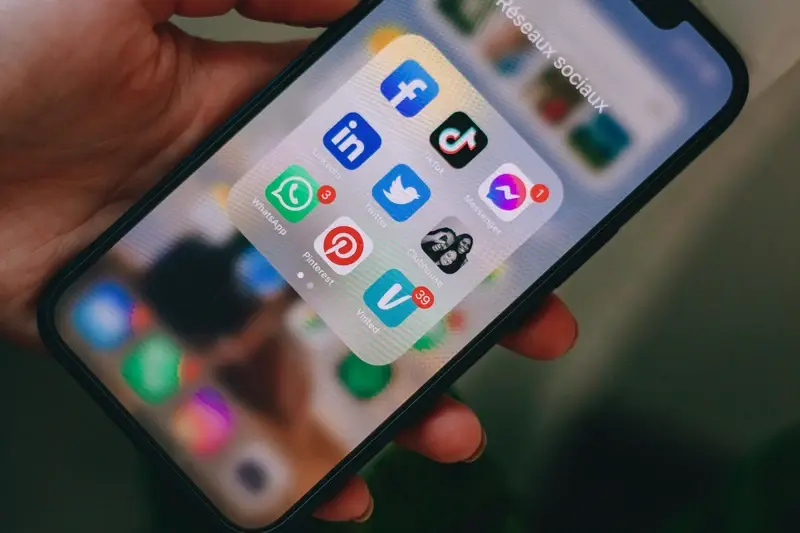How Do I Get My App In The App Store?
Every day, around 1,000 new apps are submitted to the App Store and Google Play Store combined. That's a staggering number when you think about it—and it means your app needs to stand out from the crowd before it even reaches users' phones. The app store submission process can feel overwhelming, especially when you're doing it for the first time. Will your app get approved? How long will it take? What if something goes wrong?
Here's the thing: getting your app approved isn't rocket science, but it does require careful planning and attention to detail. Both Apple and Google have specific requirements that your app must meet, and understanding these requirements upfront can save you weeks of back-and-forth rejections. I've seen brilliant apps get rejected for simple oversights—missing privacy policies, incorrect metadata, or failing to follow design guidelines.
The key to successful app store submission isn't just having a great app; it's understanding exactly what the stores expect from you and delivering it perfectly the first time.
Whether you're looking to publish your app on iPhone, Android, or both platforms, this guide will walk you through the entire app approval process step by step. We'll cover everything from preparing your app for submission to handling rejections if they happen. By the end, you'll have a clear roadmap for getting your app live and in front of users.
Understanding App Store Requirements
Right, let's talk about what both Apple and Google actually want from your app before they'll let it into their stores. And trust me, they can be quite picky! Both the App Store and Google Play have their own set of rules—some similar, some completely different.
Technical Standards
Your app needs to work properly, which sounds obvious but you'd be surprised how many submissions fail here. Apple wants your iOS app to follow their Human Interface Guidelines; Google has Material Design principles for Android. Both stores will test your app for crashes, broken features, and performance issues. If your app takes forever to load or keeps crashing, you're getting rejected straight away.
Content and Policy Guidelines
This is where things get interesting. Apple tends to be stricter about content—they don't like apps that are too basic or just wrap a website. Google is more relaxed but they're tough on privacy and data collection. Both stores hate spam, inappropriate content, and anything that could harm users. You'll need proper privacy policies, age ratings, and clear descriptions of what your app does. The good news? Most of these requirements are just common sense wrapped up in official language.
Preparing Your App for Submission
Right, so you've built your app and you're ready to get it out there—but hold on a minute. There's still some groundwork to do before you can jump into the app store submission process. Think of this stage as getting your app dressed up for its big debut; you wouldn't turn up to a job interview in your pyjamas, would you?
The preparation phase is where many developers trip up, and I've seen countless apps get rejected simply because someone rushed through these steps. Both Apple and Google have specific requirements that your app must meet, and missing even one small detail can send you back to square one.
Testing Your App Thoroughly
Before you even think about submission, your app needs to work properly on different devices. Test it on various screen sizes, operating system versions, and hardware configurations. I always recommend testing on at least three different devices—you'd be surprised how many bugs only show up on certain models.
Gathering Your Assets
You'll need several things ready before you can publish app iPhone Android platforms. Here's what both app stores require:
- App icons in multiple sizes (each store has different requirements)
- Screenshots for different device types
- App description and metadata
- Privacy policy (this is mandatory now)
- App binary file that's been properly signed
Always create your app icons as vector files first, then export them to the required pixel dimensions. This ensures they stay crisp across all sizes and saves you time later.
The app approval process can take anywhere from a few hours to several days, so getting everything right the first time will save you both time and stress down the line.
Creating Developer Accounts
Right, let's talk about developer accounts—something that trips up a lot of people when they're getting their app ready for the stores. You can't just rock up to Apple or Google and upload your app; you need proper developer accounts first. Think of these as your official credentials that prove you're legitimate and give you access to all the publishing tools.
For Apple's App Store, you'll need to sign up for the Apple Developer Program. This costs £99 per year and gives you access to everything you need—development tools, testing capabilities, and most importantly, the ability to publish apps. The process is straightforward but can take a few days to get approved, so don't leave this until the last minute.
What You'll Need to Get Started
Google Play is a bit different; their one-time registration fee is just £20, which makes it much more budget-friendly. Both platforms will ask for similar information during setup, and you'll need to verify your identity properly.
- Valid government-issued ID or business registration documents
- Bank account or credit card for payments
- Tax information (varies by country)
- Contact details and address verification
Business vs Individual Accounts
Here's something people often overlook—you need to decide whether to register as an individual or business. If you're planning to make money from your app or work with a team, go with a business account from the start. Trust me, changing this later is a proper headache!
The iOS App Store Submission Process
Right, let's talk about getting your app into Apple's App Store—this is where things get properly serious. Apple runs a tight ship and they want to make sure every app meets their standards before it goes live. The good news? Once you know what they're looking for, the app store submission process becomes much more straightforward.
Getting Your Submission Ready
You'll need to head over to App Store Connect (Apple's submission portal) and create your app listing. This means uploading your app binary, writing your description, choosing your keywords, and adding screenshots. Apple will want to see everything—your privacy policy, any third-party content you're using, and details about what your app actually does. Don't rush this bit; a well-prepared submission saves you weeks of back-and-forth.
The app approval process typically takes between 24-48 hours, but can extend to seven days during busy periods or if your app requires additional review
What Happens Next
Once you hit submit, Apple's review team takes over. They'll test your app on real devices, check it follows their guidelines, and make sure it won't cause any problems for users. If everything looks good, you'll get approved and can release immediately or schedule a launch date. If not, they'll send back notes on what needs fixing—and trust me, their feedback is usually spot on.
The Google Play Store Submission Process
Right, so you've got your Android app ready and now it's time to get it on the Google Play Store. The good news? Google's process is generally more straightforward than Apple's—they're less strict about their review process and you'll usually get approved faster.
First things first, you'll need to upload your APK or AAB file through the Play Console. Google prefers the newer AAB format these days; it helps reduce app sizes which users love. You'll then fill in your app's listing details—title, description, screenshots, and all that jazz. Pro tip: spend time on your screenshots because they're what sell your app to potential users.
Key Steps in the Review Process
- Upload your app bundle or APK file
- Complete your store listing with descriptions and images
- Set your pricing and distribution countries
- Submit for review and wait (usually 1-3 days)
- Respond to any feedback if rejected
Google's automated systems do most of the heavy lifting here, scanning for malware and checking basic compliance. The human review team focuses on policy violations—things like inappropriate content or misleading descriptions. Once approved, your app goes live almost immediately. No waiting around like with Apple!
Common Rejection Reasons and How to Avoid Them
Getting rejected by app stores can feel like a punch to the gut—trust me, I've been there more times than I'd like to admit! But here's the thing: most rejections are completely avoidable if you know what to look out for. The good news is that both Apple and Google are pretty transparent about their guidelines, so there's no excuse for basic mistakes.
Technical Issues That Kill Your Chances
The biggest culprit? Apps that crash or don't work properly. Sounds obvious, but you'd be surprised how many developers submit buggy apps thinking they'll slip through. Both stores test your app thoroughly, and if it crashes during their review process, you're getting an instant rejection. Make sure your app works on different device sizes and operating system versions before you submit.
Content and Design Problems
Incomplete apps are another massive red flag. If your app looks like a placeholder or has dummy content, the reviewers will send it straight back. Your app needs to be fully functional and provide real value to users—not just promise to do something "coming soon".
Test your app on multiple devices and ask friends to try breaking it before submission. Fresh eyes often spot issues you've missed.
Copyright violations and inappropriate content will also get you rejected faster than you can say "app store submission process". Make sure all your images, sounds, and content are either original or properly licensed.
Post-Approval Launch Strategy
Getting your app approved is brilliant—but it's not the finish line. I've watched too many developers celebrate their approval only to see their app disappear into the void of millions of other apps. The real work starts now, and what you do in the first few weeks can make or break your app's success.
Your Launch Day Checklist
Before you hit that publish button, make sure you've got everything sorted. Your app store listing needs to be perfect because first impressions count. Check your screenshots one more time, read through your description for typos, and double-check your keywords are working hard for you.
- Share with family and friends first for initial reviews
- Post on your social media channels
- Send an email to your existing contacts
- Reach out to relevant bloggers or journalists
- Consider running targeted ads on social platforms
The First Few Weeks Matter Most
App stores love new apps that gain traction quickly. If you can get downloads and positive reviews in your first week, the algorithms will start showing your app to more people. It's like a snowball effect—the more momentum you build early on, the easier it becomes to keep growing. Don't expect overnight success though; building a user base takes time and patience.
Conclusion
Getting your app into the App Store or Google Play Store doesn't have to be scary—though I'll admit, the first time you hit that submit button, your heart might skip a beat! The app store submission process might seem overwhelming at first, but once you've done it a few times, it becomes second nature. Just like riding a bike, really.
The key things to remember are simple: follow the guidelines, test everything thoroughly, and don't rush. I've seen too many developers get excited and submit their app before it's ready, only to face rejection and have to start over. Take your time with the prep work—it pays off.
Whether you're looking to publish app iPhone or Android (or both!), the fundamentals remain the same. Good preparation leads to smooth approval. Bad preparation leads to headaches and delays. The app approval process is fair, but it's strict—and that's actually a good thing for everyone.
Your app is ready for the world now. You've got all the knowledge you need to navigate the submission process successfully. Best of luck with your launch—I'm genuinely excited to see what you've built!
Share this
Subscribe To Our Learning Centre
You May Also Like
These Related Guides

How Do I Make My App Stand Out In The App Store?

How Long Does App Store Approval Take?



